Jcb vs Cat: What’s the Difference?

George Yang | Founder at EPO
Hi, I'm George Yang, here to share my expertise in excavator parts with you.
Table of Contents
Are you wondering which brand is better for your construction needs, JCB or CAT? The difference might surprise you!
As an excavator and machinery parts expert, I’ve seen firsthand how these brands stack up against each other. My insights will give you the practical answers you need to make a smart choice.
JCB is known for innovation in smaller machines, while CAT excels in heavy-duty performance. Both brands shine but in different ways.
In this guide, you’ll learn about the strengths and weaknesses of JCB and CAT in terms of durability and application. We’ll also explore which brand suits specific tasks better.
So let’s get started!
1. Overview of JCB
JCB is a global leader in manufacturing construction, agriculture, and industrial machinery. Founded in the UK, they have been at the forefront of innovation and quality in equipment design for over 75 years. Today, their machines are used in more than 150 countries, making JCB a trusted name worldwide. Let’s take a closer look at what they offer:
Products Line
- Backhoe Loaders: JCB is famous for its versatile backhoe loaders, which combine a loader in the front and an excavator in the back. These machines are perfect for digging, trenching, and material handling.

- Excavators: Their range of excavators includes compact to heavy-duty models with powerful digging performance. For reliable replacement parts for these equipment, EPO offers high-quality components with competitive pricing.
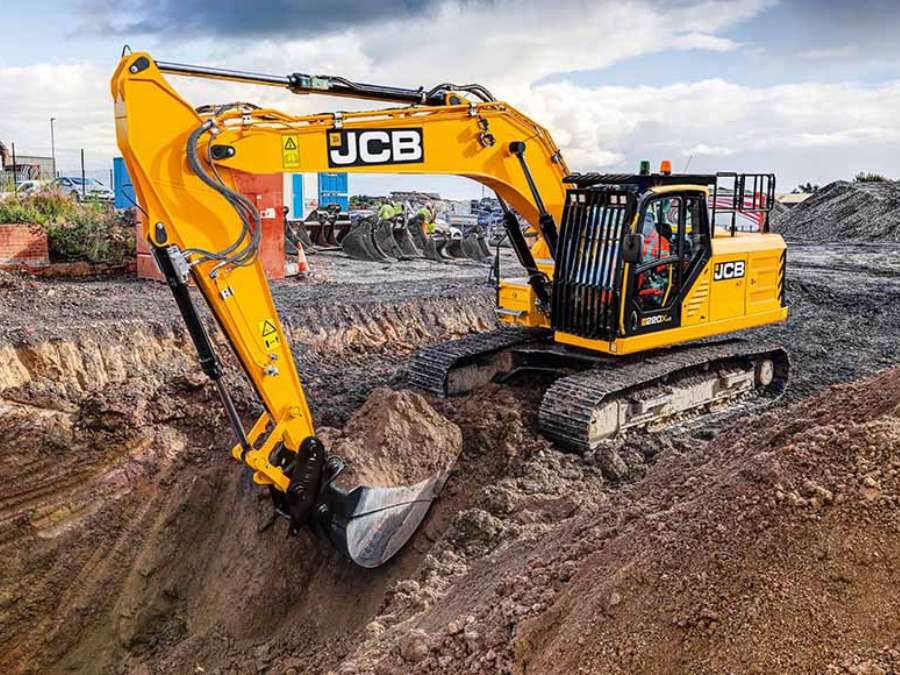
- Telehandlers: Its telehandlers are built to lift and move heavy loads at great heights. They are essential for agriculture and construction, where precise material handling is required.
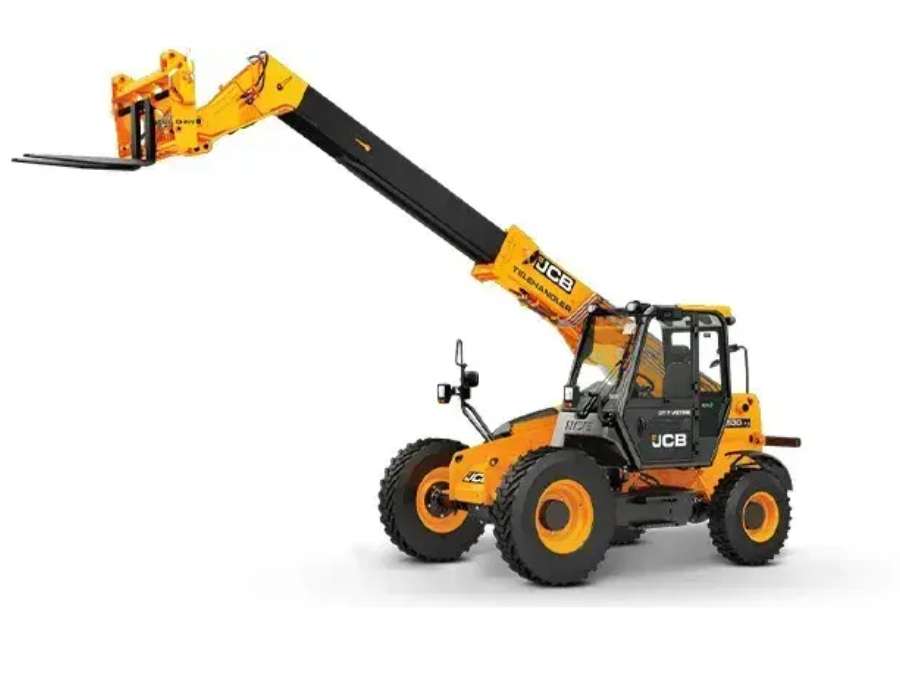
- Wheel Loaders: Their wheel loaders are designed for high performance in bulk material handling. These machines are ideal for tasks such as loading, transporting, and stockpiling.
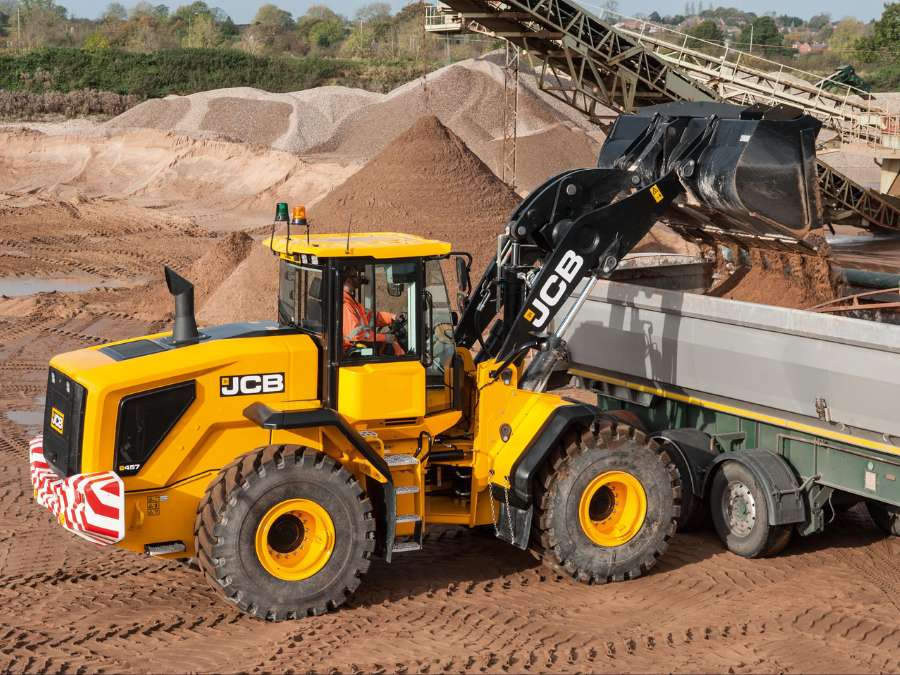
- Skid Steer Loaders: Its skid steer loaders are designed for a wide range of tasks in tight spaces. They are often used in construction, landscaping, and agriculture.
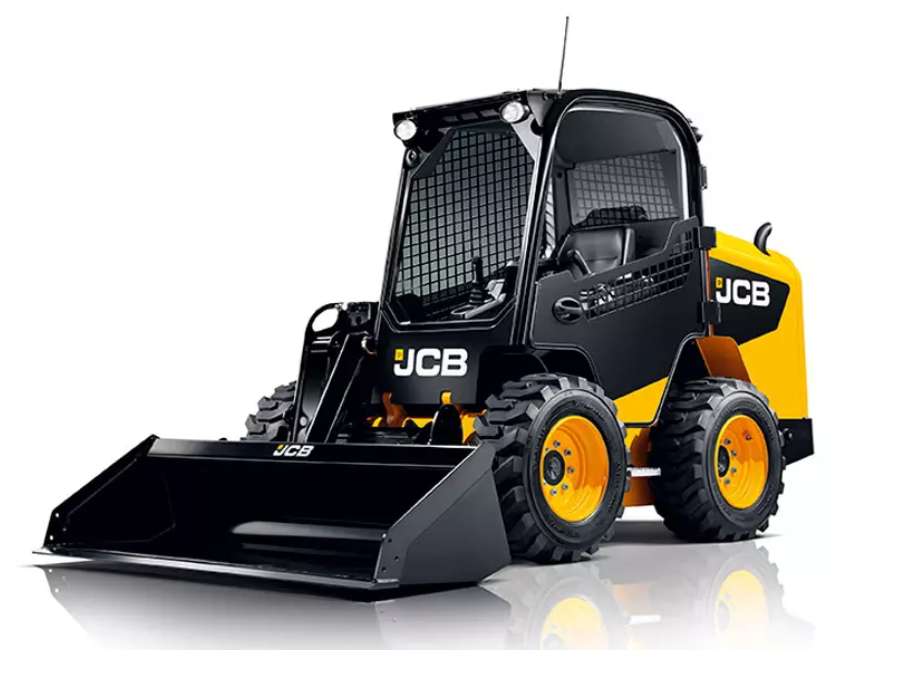
Brand Features
- Innovative Design: JCB is known for its focus on innovation, continuously improving its machines to meet modern industry needs. Their equipment often includes advanced features for better performance.
- Durability: Their machines are built to last, with heavy-duty construction that can withstand tough conditions. This durability makes them a favorite in industries requiring long-lasting equipment.
- Fuel Efficiency: Many of its machines are designed to reduce fuel consumption, which helps businesses save on operational costs. This is especially useful for companies with large fleets of machinery.
- Operator Comfort: They place a strong emphasis on operator comfort, designing cabins with ergonomic controls. This leads to improved productivity and reduced fatigue for machine operators.
2. Overview of CAT
CAT, short for Caterpillar, is an American company known for its dominance in the heavy equipment industry with a 16.3% market share reported by Statista. They built a reputation for delivering powerful machinery for construction and other industries. Its focus on innovation makes it a top choice for large-scale projects across the globe. Let’s explore the details of what this brand offers:
Products Line
- Backhoe Loaders: Their backhoe loaders are versatile machines used for digging, trenching, and loading. These loaders are ideal for smaller jobs that require flexibility and power combined.
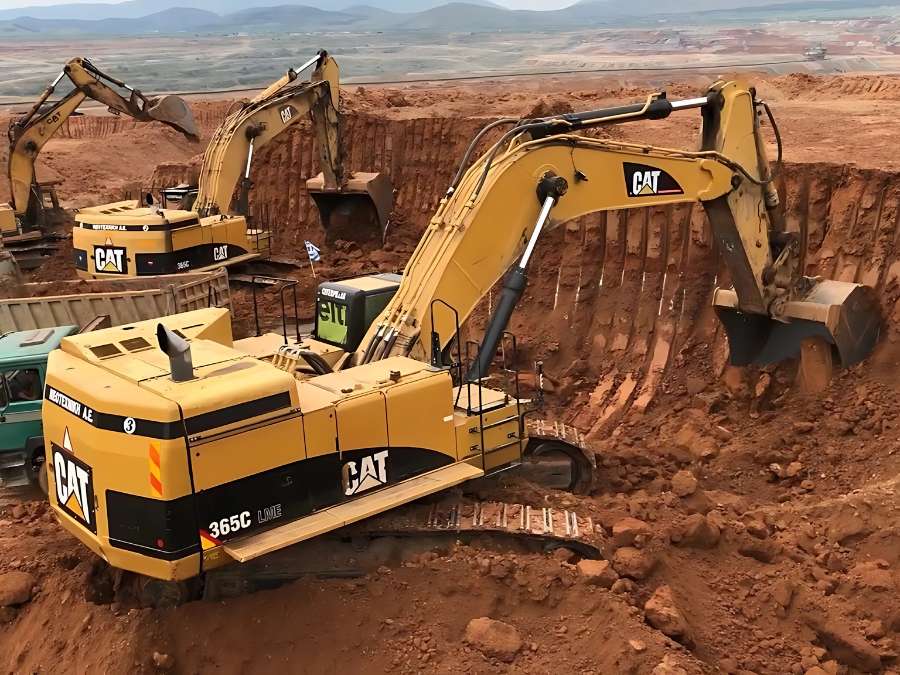
- Wheel Loaders: Wheel loaders from Caterpillar are built for efficiency in handling bulk materials. These machines excel at moving, transporting, and stockpiling large amounts of material quickly.
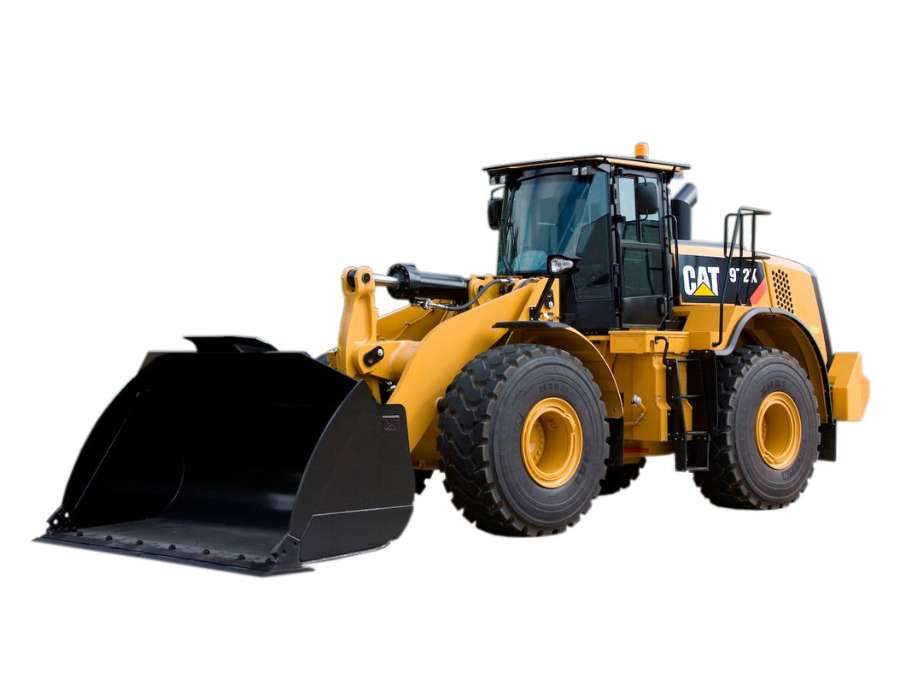
- Skid Steer Loaders: Its skid steer loaders are compact and perfect for tasks in tight spaces. They are commonly used in construction and agriculture due to their versatility and maneuverability.
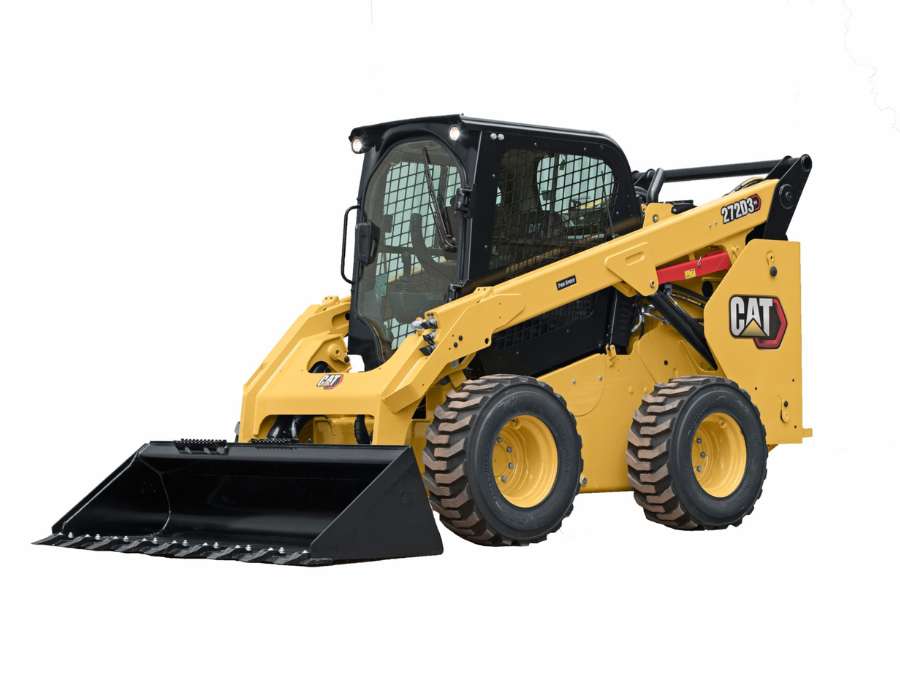
- Excavators: Caterpillar excavators are powerful machines designed for tasks like digging and heavy lifting. Known for their durability and efficiency, they are commonly used in construction and mining projects.
For those using CAT excavators, EPO offers a wide range of high-quality parts for CAT excavators, helping businesses maintain performance and minimize downtime. Below are the parts and models available for Caterpillar excavators:
| Part Names | Model Names |
| Air Compressor, Alternator, Backhoe Parts, Bucket Teeth, Catalytic Converter, Cylinder Head, ECM (Engine Control Module), Exhaust Manifold, Fan Belt, Final Drive, Fuel Filter, Fuel Injector, Fuel Pressure Regulator, Fuel Pump, Hydraulic Control Valve, Hydraulic Cylinder, Hydraulic Hose, Hydraulic Oil Filter, Hydraulic Pump, Injector Solenoid, Injection Pump, Jake Brake Solenoid, Lift Cylinder, Oil Cooler, Oil Filter, Radiator, Rocker Arm Assembly Starter, Steering Pump, Swing Motor, Thermostat, Tilt Cylinder, Track Adjuster, Turbocharger, Water Pump | 420, 259D, 424B, 330, 320, 336, 308, 305, 303.5, 312, 315, 320D, 320D2, 330B, 330D, 340, 3406, 3406E, 3508, 3512, 3600, 416, 420D, 420E, 432, 963, 992G, 988H, 854K, 797F, 777, 140, 140G, 140H, 140M, 120M2, 120M, D2, D5, D6, D8, D10, D11, D14, 930, 938, 950, 977, 299D, 299D3, 215, 225, 235, 262C, 275, 277, 299, 304, 307, 311, 315BL, 320B, 320C, 330C, 330CL, 336D, 395 |
Brand Features
- Long-Lasting Durability: Their machines are built to last, making them a reliable investment for businesses. Their tough construction promises that they can handle the harshest work environments.
- High Resale Value: Its equipment holds its value well, making it easier for businesses to resell their machines. This makes CAT a smart choice for those considering future returns on investment.
- Advanced Technology: They integrate modern technology, like GPS systems and automation, into their machines. These advancements improve work efficiency and precision on job sites.
- Strong Global Support: Its global network of dealers and service centers means that support is always nearby. This helps reduce downtime and keeps machines running smoothly.
3. Key Difference Between JCB and CAT
When comparing JCB and CAT, it’s essential to understand that both brands bring unique strengths to the table. Each has its advantages and challenges, which makes the decision highly dependent on the specific needs of your project. Let’s take a look at the key differences between these brands:
| Category | JCB | CAT | Komatsu | How to Choose |
| Pros | – Compact and efficient. – Lower cost. | – More technological features. – Excellent parts availability. | – Good balance of tech and durability. – Reliable performance. | For compact spaces, JCB provide maneuverability, while CAT and Komatsu offer advanced features for broader applications. Choose based on space constraints and tech needs. |
| Cons | – Less durable for heavy-duty tasks. – Fewer tech features. | – Higher fuel consumption. – Expensive maintenance. | – Higher initial costs. – Expensive maintenance. | |
| JCB | CAT | Case | How to Choose | |
| Pros | – Less expensive. – Fuel-efficient. | – Durable for long-term use. – Strong dealer network. | – Affordable. – Low maintenance costs. | CAT is tech-driven for high-productivity environments, Komatsu offers a good balance of performance, while Case is economical for smaller tasks. |
| Cons | – Fewer tech features. – Lower lifting capacity. | – Expensive maintenance. – Higher cost. | – Limited durability.- Fewer tech features. | |
| JCB Skid Steer | CAT Skid Steer | How to Choose | ||
| Pros | – Easy maintenance – Fuel efficient | – Strong hydraulic system – High lift capacity | For heavy-duty tasks, CAT’s Skid Steer power is advantageous, but JCB Skid Steer is preferable for cost-sensitive projects. | |
| Cons | – Lower resale value – Fewer attachments | – Higher fuel consumption – Higher maintenance costs | ||
| JCB 4CX | CAT 444 | How to Choose | ||
| Pros | – Versatile on rough terrain – Lower fuel costs | – Robust frame – Efficient digging depth | Choose JCB 4CX is best for its fuel economy and versatility; opt for CAT 444 if you need stronger digging capabilities. | |
| Cons | – Less digging power – Higher initial cost | – Heavier – Lower fuel efficiency | ||
| JCB 3CX | CAT 428 | How to Choose | ||
| Pros | – Compact design – User-friendly controls | – High lifting capacity – Long-lasting components | CAT 428 is best for high lifting needs, while JCB 3CX is ideal for flexibility and ease of use. | |
| Cons | – Limited lifting height – Slower cycle times | – Higher noise levels – Costlier parts | ||
| JCB 3DX | CAT 424B | How to Choose | ||
| Pros | – Budget-friendly – High reliability | – Superior hydraulic power – Durability in harsh conditions | JCB 3DX is cost-effective for smaller projects; CAT 424B is a durable choice for heavy-duty applications. | |
| Cons | – Lower hydraulic power – Limited warranty | – Higher price – More frequent servicing | ||
| JCB Excavator | CAT Excavator | How to Choose | ||
| Pros | – Lightweight design – Efficient fuel usage | – High digging power – Advanced technology | For complex tasks, the maneuverability of JCB’s excavator is ideal; CAT’s power is suitable if you have major excavation jobs. | |
| Cons | – Lower digging depth – Limited attachments | – Expensive parts – More training needed | ||
| JCB Backhoe Loader | CAT Backhoe Loader | How to Choose | ||
| Pros | – Affordable parts – Simpler to operate | – Greater lifting capacity – Stronger construction | JCB’s backhoe loader suits budget-conscious buyers, whiile CAT excels in high-capacity backhoe loader tasks. | |
| Cons | – Slower operation – Less lifting power | – High maintenance – Higher purchase price | ||
| JCB Backhoe | CAT Backhoe | How to Choose | ||
| Pros | – Lower operating cost – Good for light work | – High stability and performance – Advanced hydraulic features | Use JCB backhoe for budget-friendly, lighter tasks; select CAT for heavy-duty backhoe performance. | |
| Cons | – Limited digging depth – Fewer comfort features | – Expensive initial cost – Higher fuel usage | ||
| JCB 3DX Specification | CAT 424B | How to Choose | ||
| Pros | – Lower cost – Easy maneuverability | – Strong hydraulics – Superior build | CAT’s 424B hydraulics make it suitable for heavy lifting; JCB 3DX is a budget-friendly choice for simpler tasks. | |
| Cons | – Lower power output – Fewer attachments | – Higher fuel costs – More expensive parts | ||
| JCB 3DX | CAT 424B2 | How to Choose | ||
| Pros | – Reliable in compact spaces- Affordable | – High performance- Heavy-duty hydraulics | Opt for CAT 424B2 for powerful hydraulics, while JCB 3DX offers cost-effective solutions for lighter operations. | |
| Cons | – Limited high-tech features- Slightly lower digging depth | – Higher operating cost- Heavier | ||
In conclusion, both JCB and CAT offer excellent machinery, but the best choice depends on your specific needs. If you need versatility and affordability, JCB might be the better option. For heavy-duty performance and advanced technology, CAT stands out as the stronger choice for large-scale operations.
4. 4 Tips for Choosing the Right Brand for Your Needs
Selecting between JCB and CAT depends on various factors that align with your project requirements. From the type of work to budget considerations, knowing what to focus on will help make your decision clearer. Let’s look at the key factors that can guide you in picking the best brand for your specific needs:
#1 Integrates Advanced Automation
If automation is a priority, CAT’s machinery includes modern technology like GPS tracking and remote operation features. These advances enhance precision, especially on projects requiring high control levels. JCB’s technology is more basic, focusing on user-friendly software that don’t require extensive training. Select CAT if automation will streamline your work; otherwise, JCB offers a simpler approach.
#2 Ideal for Large-Scale Projects
If you work on large construction, CAT may be the better choice due to its heavy-duty machinery built for power. Their equipment is designed to handle continuous use, well-suited for demanding jobs. For example, in smaller projects that require more flexible equipment, JCB offers machinery that is easier to operate on compact sites. Choose a brand based on the size and intensity of your typical project workload.
#3 Less Maintenance Needs
JCB’s straightforward machinery often requires fewer complex repairs and less downtime. CAT, while equipped with more advanced systems, may require more specialized technicians, making maintenance potentially more costly. For those needing fast repairs with widely available parts, JCB offers a practical solution, whereas CAT provides stronger support in regions with established service centers.
#4 Operator-Friendly System
If your operators have varied experience levels, JCB’s more intuitive controls make it ideal for less experienced users or high turnover rates. For instance, CAT machines, while more advanced, may require extra training to operate effectively, but they provide greater control for skilled operators. Align the complexity of the equipment with your team’s skill level to maximize productivity and safety on the job.
Conclusion
Deciding between JCB and CAT machinery depends on your unique project needs. While JCB offers flexibility and fuel efficiency, CAT stands out for its power and advanced features. Each brand has strengths suited to different tasks, so the best choice ultimately depends on what’s most important for your projects.
We hope this guide has provided valuable insights to help you choose the right brand for your needs. If you’re looking to avoid the frustration of unreliable suppliers, EPO is here for you. As a trusted manufacturer of high-quality excavator parts, we offer professional service with extensive SKU’s and competitive pricing—contact us today to learn how we can support your business.
Table of Contents
Recent Posts
Quick Quote
Fill out the form, get the quote in hours!
Recent Blogs
Sorry, we couldn't find any posts. Please try a different search.




